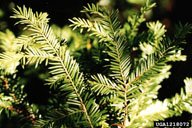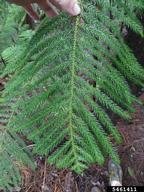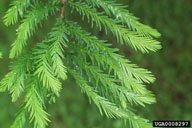**Do not consume anything from the wild that has not been verified by a professional or accurately identified. Always be sure of the identification of the plant/fungi before consuming and avoid foraging in potentially contaminated areas. Misidentification can lead to serious illness or even death. Also, be sure to check local regulations.
Minnesota Master Naturalist Submission: Cheryl Batson
White Pine needles are a great source of vitamin C and vitamin A. They can be harvested at any time of the year. Most white pines are located outside of the Twin Cities area up north. However, you can find park and homestead plantings here and there. As always, make sure to harvest only with the landowner’s permission.
Eastern white pine is easy to identify. It has 3- to 5-inch needles in bundles of 5 that are soft and bend when you push them into your hand (unlike the shorter and stiffer red pine needles which come in clusters of 2). If you happen to pick red pine instead of white pine, this is okay as both make good tea and contain the same health benefits.
Left: White Pine with clusters of 5 needles (Cheryl Batson) Right: Red Pine (Steven Katovich, Bugwood.org)
You do want to make sure to not choose toxic evergreen plants that are available in the home and some park landscaping. These are Canadian yew and cypress conifers (unlikely trees in Minnesota, however, some communities are starting to plant them). Canadian yew can cause heart problems and even death. Cypress is considered inedible, but I am unable to locate a reason. Norfolk pine is a houseplant in the United States and can cause severe upset stomachs.
Left: The short flat needles of Canadian yew. (Bill Cook, Michigan State University, Bugwood.org) Middle: Needlelike leaves of the Norfolk Pine curve upward at a point. (Joseph LaForest, University of Georgia, Bugwood.org) Right: Cypress (Paul Wray, Iowa State University, Bugwood.org)
To harvest the white pine needles, choose green as opposed to brown needles attached to a branch. If harvesting a larger amount, choose a little from different trees and different areas of the tree to prevent causing stress. If there are any lighter green needles, choose these as they are younger.
To make 1 cup of tea, you will need about one-third cup per 2 cups of water. Simply boil the water and pour it over the pine needles that have been cut to a half inch to release the flavor and nutrients. Let it sit or steep for 10-15 minutes. Then strain out the needles. You can also steep the needles in a tea ball. If desired, you can add some lemon or honey for additional flavoring.




